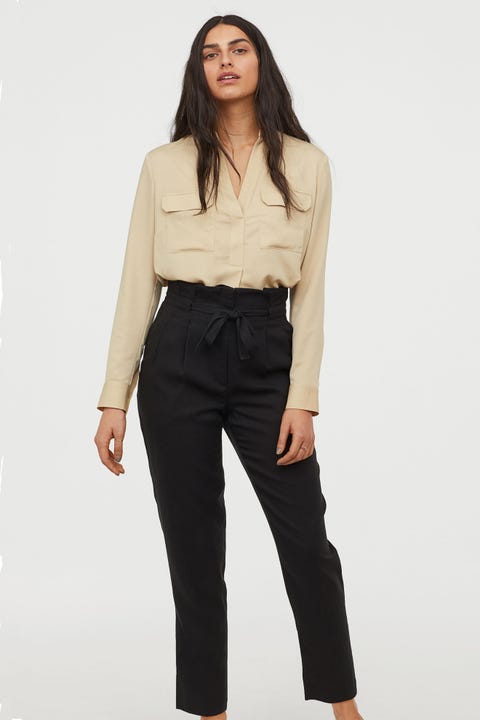Slow Fashion is an awareness and approach to fashion, which considers the processes and resources required to make clothing, particularly focusing on sustainability. It involves buying better-quality garments that will last for longer and values fair treatment of people, animals and the planet.
The latest fashion trend isn’t a seasonal colour or a must-have style: It’s the concept of sustainable fashion and ethical clothing. The textiles industry is wreaking havoc on the environment between the processes to make clothing and the waste when it gets tossed, so brands and consumers alike have taken a much-needed interest in improving these issues.

While “fast fashion” describes clothing that is cheaply made and intended for short-term use, “sustainable” (or “ethical”) fashion is the opposite and is sometimes even referred to as “slow fashion.” It takes into account the full lifecycle of the product — from the design, sourcing, and production processes — and looks at everyone and everything being affected by it, from the environment, to the workers and communities where it’s produced, to the consumers who purchase it. It’s a complex issue and there isn’t one brand that’s currently capable of tackling everything, but right now there are five main issues being addressed in the fashion industry:
1. Water usage: The demands for fresh water for drinking and agriculture is far surpassing what’s available. Yes, the Earth is covered in water, but most of it is unusable salt water or has been polluted. As a result, some brands are now looking at the supply chains to see how they can cut back on how much water they’re using.
2. Hazardous chemicals: Dyes and finishes from the production processes are dangerous for the workers, plus they get into the community water sources. These chemicals may not affect the consumers, but they’re a problem for the people who make clothing and those who live in areas where it’s produced. Fashion and outdoor brands are now tasked with coming up with new ways to address dyes and finishes for features like wrinkle-resistance and water-repellency.
3. Short lifecycle: Stores are constantly launching new designs and consumers are regularly updating their wardrobes. The biggest goal in sustainable fashion is to buy less and use things longer. To make clothes last, there are platforms for closet-sharing, brands that promote buying used clothing, and simple yet durable styles that you can wear over and over again.
4. Waste: On top of having a short lifecycle, there needs to be a way to create less trash by making products useful again once they’ve run their course. One way is to repair garments (i.e. mending holes in jeans and replacing worn soles of shoes) while another opportunity comes from using recycled materials in apparel.
5. Agriculture: Natural fibers like cotton are often grown using pesticides and treatments that are harmful to the farmers, workers, and wildlife in the area. There are now more options for organic cotton, linen, and other fibers available, which also use less water than the conventional growing methods. Plus, brands are looking at being organic throughout the production process – not just the growing of the crop, which is only the first step.
Levi’s

From growing the cotton to dyeing and finishing, it takes over 2,000 gallons of water just to make one pair of jeans. Levi’s focus is on the finishing processes to remove water wherever possible with its Water<Less collection, which it says uses up to 96% less water to make. And because Levi’s is such a big player in the denim industry, steps like this can actually have an impact. On top of that, the brand publicly shares its in-depth sustainability commitments throughout the product lifecycle.
Alternative Apparel

For casual closet staples like T-shirts, hoodies, leggings, and more, Alternative Apparel focuses on using organic cotton and recycled materials. The pieces have a worn-in, vintage look that’s timeless so they won’t go in and out of style. The brand also uses more sustainable packaging and low impact dyes, and it follows strict ethical standards for the factories it sources from. And it’s not just for women: there are also styles for men and kids. By 2021, Alternative is working to replace all virgin polyester with 100% recycled polyester in its manufacturing.
H&M Conscious

Each item in the Conscious collection has an aspect that lessens its environmental impact, like organic cotton or recycled polyester. The best part is that the styles start at just $10 so you don’t have to spend a fortune on sustainable fashion. You can also recycle your unwanted clothing at H&M stores for a discount to buy something new. Even if it’s torn up and can’t be reworn, the brand makes sure the clothes are used for something else and won’t end up in a landfill. The H&M Group parent company says overall it uses 57% recycled or sustainably sourced fibers, with a goal to each 100% by 2030.
Polo Ralph Lauren

This is another example of a large brand making a simple change, yet it has the ability to make a significant impact on the environment because of its volume. The Earth Polo (also available in men’s and kid’s variations) is made of recycled water bottles and uses dyes that don’t require water in the application process.
Even though it’s just a shirt, Polo Ralph Lauren estimates that it will save the equivalent of 170 million plastic bottles from landfills by 2025. The company also publishes a sustainability report to showcase its efforts and goals for years to come.
So next time you’re shopping for clothes and fashion, consider purchasing your items from an ethical brand – you’ll feel good for doing it!


